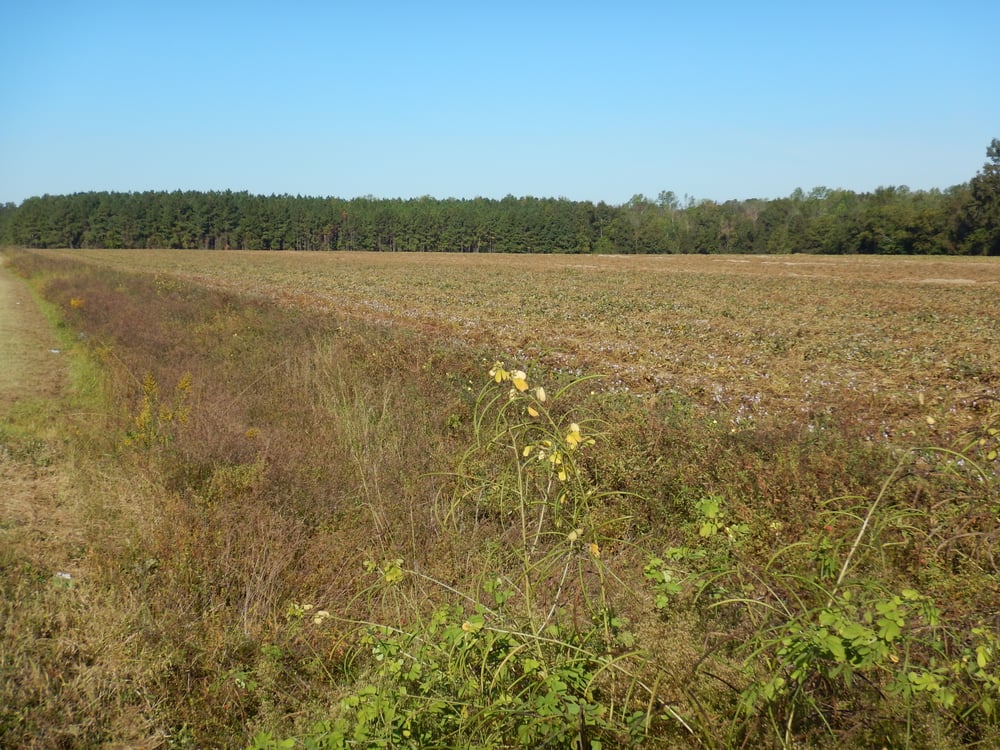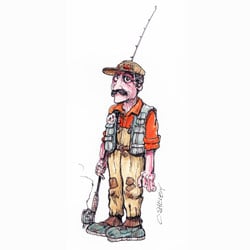Discover how wildlife corridors are helping reconnect fragmented sections of animal habitat while increasing human safety, plus how to use your rural land to help.
Productive wildlife habitat has been described as a patchwork quilt, where each piece represents a different type of habitat needed for food, cover and nesting.
When these patches become disconnected, and wildlife can no longer move easily or safely between them, wildlife populations often suffer with significant economic damage. This disconnection can occur in many ways.
However, the implementation of wildlife corridors offers a promising solution to this issue. In this article, we will explore the significance of wildlife corridors, their impact on ecosystems, and the role individuals and governments play in preserving these vital pathways.
- Causes of Wildlife Fragmentation
- The Economic Cost of Wildlife Fragmentation
- Wildlife Corridors as one solution
- What are Wildlife Corridors?
- Types of Wildlife Corridors
- Why are Wildlife Corridors Important?
- Government Initiatives and Legislation
- The Role of Rural Landowners Play in Wildlife Corridors
.jpg?width=4143&height=2330&name=2022-09-12%2008.04.10%20(2).jpg)
Causes of Wildlife Fragmentation
Habitat fragmentation occurs when natural landscapes are divided into smaller, isolated patches, disrupting the connectivity between habitats. This can happen due to various factors such as infrastructure development, construction of roads, urban development and agricultural expansion.
Highways can act as barriers, preventing animals from moving freely between habitats. For instance, the Virginia Department of Transportation estimates that 70,105 miles of roads crisscross the state and create isolated sections of habitat.
Urban development is another source of fragmentation. A study by McGuire, Lawler, McRae, and Theobald published in the Proceedings of the National Academy of Sciences estimates that in the United States, only 41% of natural land has sufficient connectivity for wildlife movement, and this number is significantly lower in the eastern states.
The Indiana Division of Fish and Wildlife has stated that habitat fragmentation is one of the greatest threats to wildlife populations. These animals need the ability to move between food sources and access cover to reduce the chance of predation and avoid isolating populations and limiting genetic diversity.
The Economic Cost of Wildlife Fragmentation
Wildlife fragmentation comes with a significant economic cost. Wildlife often needs to cross roads to move between habitat types, leading to collisions with motorists.
In the United States, the International Fund for Animal Welfare reports that “collisions between motorists and wildlife cause more than 200 human fatalities and over 26,000 injuries each year, at an annual cost to Americans of more than $8 billion.”
Fragmented habitats can lead to the decline of species, resulting in imbalanced ecosystems and reduced biodiversity. This, in turn, can disrupt vital ecosystem services such as pollination, water filtration and pest control.
These services are essential for agriculture, forestry and human well-being, making wildlife fragmentation a threat to our economy and quality of life.
Wildlife Corridors are One Solution to Reconnecting These Fragmented Sections of Habitat
Wildlife corridors offer a solution to the challenge of habitat fragmentation by reconnecting fragmented sections of habitat, promoting biodiversity, reducing the economic impact of wildlife collisions, and maintaining healthy ecosystems.
What are Wildlife Corridors?
Wildlife corridors are strips of natural habitat that connect fragmented landscapes, allowing wildlife to move freely between different areas. They serve as vital conduits for the dispersal of plants and animals, facilitating gene flow and maintaining genetic diversity.
In an article written by Susan Morse for the U.S. Fish and Wildlife Service, Morse explains, “Whether they run, swim or fly, wild animals need to complete their life cycles. We call their routes wildlife corridors.”
Types of Wildlife Corridors
Wildlife corridors can take various forms, including:
- Riparian zones,
- Hedgerows,
- Forested corridors,
- And even tunnels or bridges that cross highways.
Corridors also vary based on the needs of the species that they aim to support.
Examples of Wildlife Corridors for Different Species
Different species required different types of corridors, including:
- Large Corridors for Roaming Animals
For larger roaming animals, corridors need to incorporate extensive areas. For instance, consider that the typical range of a black bear is fifteen square miles. With seasonal changes in food sources, bears will cover a lot of ground.
- Small Corridors for Small Game
Small game species like rabbits, quail, and songbirds require small corridors to support their movements and ensure their survival.
Michael Hook, Small Game Program Leader for the South Carolina Department of Natural Resources, notes that these species have been able to eke out an existence in all sorts of scraps of cover. In the past, these have occurred on fence rows, ditches and farm boundaries.
- Stream Corridors for Fish
In between these two examples are hundreds of species with varying needs. Consider fish for example.
Fish species like trout, herring and shad need access to streams for spawning. However, culverts, dams and bridges often impede the ability of fish to move upstream.
Assessments of streams in Virginia by Trout Unlimited and the Fish and Wildlife Service showed that over half the streams had structures limiting fish movement.
Why are Wildlife Corridors Important?
The establishment of wildlife corridors can have numerous benefits for both wildlife and humans. A few examples include:
Biodiversity Conservation
By connecting fragmented habitats and allowing animals to move freely between them, corridors promote genetic diversity among animal populations.
This genetic diversity is crucial for the long-term survival and adaptability of species, as it increases their resilience to environmental changes and reduces the risk of inbreeding.
Mitigating Human-Wildlife Conflicts
By providing designated pathways for wildlife, corridors help reduce conflicts between humans and animals. These corridors not only protect wildlife populations but also reduce the risk of accidents and property damage caused by wildlife crossing roads or highways.
Ecosystem Functioning
By providing animals with access to larger habitats and diverse resources, wildlife corridors contribute to the overall health and well-being of animal populations.
Many endangered species have small and isolated populations, making them vulnerable to extinction. By creating corridors that connect their habitats, conservation efforts can enable these species to interact, mate and maintain healthy populations.
They also allow for the movement of pollinators, facilitating the pollination of plants and ensuring the reproduction of diverse plant species.
Additionally, corridors enable the dispersal of seeds, contributing to the regeneration of vegetation across different areas.
.jpg?width=4623&height=2600&name=MFDC0354%20(2).jpg)
Government Initiatives and Legislation
With issues as large as this one, solutions sometimes have to be taken up at the government level.
Already, nine states have passed legislation to protect wildlife corridors. Among these is Florida, with the Florida Wildlife Corridor Act passed in 2021. Included in this law is $400 million in funding to acquire land or easements covering 18 million acres.
This act is expected to benefit nearly 700 species, including the Florida panther, black bear and the West Indian manatee.
In addition, the law will link natural areas to create a system of greenways that could prove to be a foundation for hiking, biking, horse riding and other uses of natural areas.
The U.S. Fish and Wildlife Service is also helping to remove fish barriers. Over the last four years, they estimate that replacement of old culverts and removal of dams has reopened 4500 miles for fish passage.
Trout Unlimited’s (TU) Reconnect Program targets stream blockage removal to improve fish passage and reconnect streams within a river ecosystem.
Often partnering with government agencies or local groups, TU has helped remove diversion dams, replaced small or perched (lower end suspended above the stream) culverts and addressed low-flow sections of streams, opening thousands of miles of rivers.
The Role Individual Landowners Play in Wildlife Corridors
While governments play a crucial role in establishing wildlife corridors, individual landowners can also make a significant impact in ensuring the success of these corridors by preserving habitats, collaborating with conservation organizations and actively participating in corridor initiatives.
EXAMPLES OF RURAL LANDOWNER CONTRIBUTIONS
- Conservation Easements
Some rural landowners voluntarily place conservation easements on their properties, legally protecting the land and its wildlife habitat.
As well as having a financial benefit for the landowner, these easements can restrict future development and ensure the perpetual conservation of critical corridors. You can learn more about Conservation Easements in our article, A Landowner's Guide to Conservation Easements.
- Habitat Enhancement
Rural landowners can actively enhance habitats within their properties by restoring degraded habitats, planting native vegetation and managing land in a way that promotes wildlife movement.
For instance, if you are building driveways or roads that cross streams, give consideration to the movement of water below these crossings to provide adequate flow. Culverts and bridges can be constructed wide enough for the stream to flow through beneath unrestricted.
- Creating Wildlife Corridors
Rural landowners can contribute to the creation and maintenance of corridors on their properties.
For small game, Michael Hook says it’s easy to construct wildlife corridors. “Say you have a fence or ditch line you want to create a corridor around; simply allow a 20 to 50-foot swath along the line to begin to grow. Put your bush hog away.”
Every 2-3 years, he adds, you may want to maintain these strips with a prescribed burn or disking. Or better yet, do it in halves in alternating years to maintain some of this favorable habitat continuously.

Preserving Biodiversity and Restoring Habitat Connectivity Together
It’s easy to forget the roles we can play in keeping this patchwork of wildlife habitat connected. By understanding the importance of wildlife corridors and implementing measures to mitigate habitat fragmentation, we can create a more sustainable and interconnected environment for both wildlife and humans.
With the efforts of individuals, organizations and government perhaps this is one issue we will start to see on the mend.

























